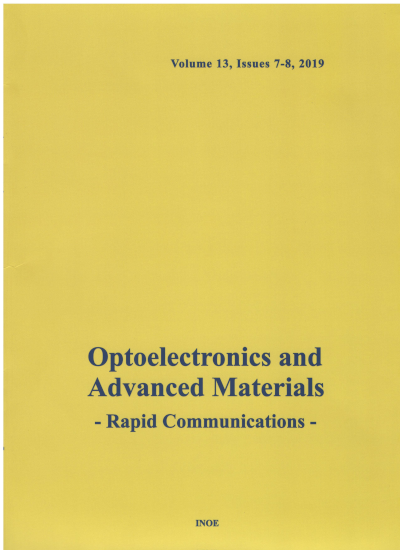Rapid and automatic evaluation of the performance of phosphor screens for image intensifiers
RONGSHENG ZHU1,
BO YANG1,
MING JI1,
JIE XIAO1,
ZHIXIONG SHI1,
ZENGWEI LI1,
LISONG ZHANG1,
HANG ZHAO1,
TIANNING SU1,
FENGGE LIU1,*
Affiliation
- Department of Operation Support, North Night Vision Technology Co. Ltd., 650217, Kunming, China
Abstract
Improvement of the detection accuracy and efficiency of phosphor screen performance for the image intensifier is not only a requirement for objectively evaluating the performance of the phosphor screen, but also a key step in enhancing product quality. A powerful way to address this problem is to achieve rapid and automatic evaluation of phosphor screen performance for image intensifiers. Key challenges that need to be overcome include automatic operation of the vacuum system and the servo system, and the design of large-area uniform electron sources. To achieve this goal, we have taken some strategies. Through reasonable design of vacuum control, the automatic adjustment and maintenance of vacuum levels can be achieved. The automatic operation of servo system has been accomplished by precisely controlling the speed and direction of the servo motor. Good luminance uniformity of phosphor screen can be ensured by designing a uniform planar electron source with a diameter of 50 mm. In conjunction with matching our software, a rapid and automatic measurement system of the phosphor screen performance for image intensifiers has been developed. To validate the performance of this system, we selected 300 phosphor screens for low-light-level image intensifiers with a diameter of 18 mm as measurement samples, grouping them into sets of 30. Subsequently, we measured their luminance, luminous efficiency, uniformity and defect, thereby obtaining the repeatability error and detection efficiency of measurement system. The experimental results show that the measurement
data of luminance, luminous efficiency, uniformity and defect meet practical requirements well. The repeatability errors for luminous efficiency and uniformity are 3.036% and 0.369%, respectively, which conform to the measurement standards. More importantly, the detection accuracy of defect reaches 93.45%, and the detection time for a single phosphor screen is only 18.2s, which is much shorter than 52.6s required for manual inspection. ...
Keywords
Automatic evaluation, Phosphor screen, Luminance, Luminous efficiency, Uniformity, Defect.
Citation
RONGSHENG ZHU, BO YANG, MING JI, JIE XIAO, ZHIXIONG SHI, ZENGWEI LI, LISONG ZHANG, HANG ZHAO, TIANNING SU, FENGGE LIU, Rapid and automatic evaluation of the performance of phosphor screens for image intensifiers, Optoelectronics and Advanced Materials - Rapid Communications, 19, 1-2, January-February 2025, pp.25-38 (2025).
Submitted at: Oct. 19, 2024
Accepted at: Feb. 3, 2025
